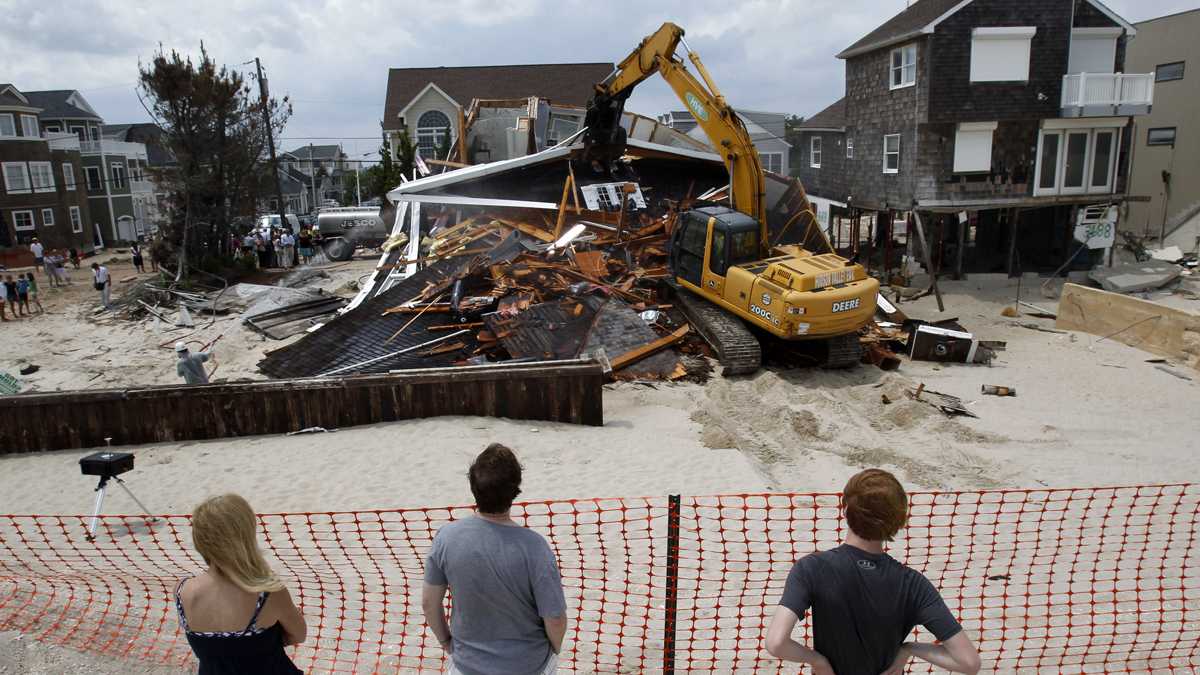Study: Heart attacks, strokes spiked in Hurricane Sandy ravaged areas

People watch from the beach Wednesday, July 10, 2013, as a home severely damaged by Superstorm Sandy is demolished in the Normandy Beach section of Toms River, N.J. (Mel Evans/AP Photo, file)
In Hurricane Sandy’s wake, life became chaotic, with thousands displaced, neighborhoods flooded and without electricity for days, and a palatable sense of fear and uncertainty.
There were also serious health consequences, a Rutgers University research study found.
Hurricane Sandy had a “significant effect” on cardiovascular events in the high-impact areas of New Jersey during the two weeks after the Oct. 2012 storm, according to a study led by Joel N. Swerdel, an epidemiologist at the Cardiovascular Institute of New Jersey at Rutgers Robert Wood Johnson Medical School and the Rutgers School of Public Health.
The storm “had unprecedented environmental, financial and health consequences on New Jersey and its residents, all factors that can increase the risk of cardiovascular events,” said John B. Kostis, director of the Cardiovascular Institute of New Jersey and RWJMS associate dean for cardiovascular research.
The researchers analyzed records from Myocardial Infarction Data Acquisition System (MIDAS), an administrative database containing patient records in New Jersey hospitals, two weeks before and after the storm struck, said Rutgers Medical School spokeswoman Jennifer Forbes.
In the two weeks following Hurricane Sandy, there was a 22 percent increase in heart attacks in the eight “high-impact” counties as compared with the same time period in the previous five years, while the increase was less than one percent in the low-impact areas, she said.
The 30-day mortality from heart attacks also increased by 31 percent in the high-impact area, Forbes added.
“We estimate that there were 69 more deaths from myocardial infarction during the two weeks following Sandy than would have been expected. This is a significant increase over typical non-emergency periods,” Swerdel said.
The investigators found a 7 percent increase in strokes compared to the same time period in the prior five years in areas of the state impacted the most, while there was no change in the incidence of stroke in low-impact areas and no change in the 30-day mortality rate due to stroke in either the high- or low-impact areas.
“Increased stress and physical activity, dehydration and a decreased attention or ability to manage one’s own medical needs probably caused cardiovascular events during natural disasters or extreme weather,” Kostis said. “Also, the disruption of communication services, power outages, gas shortages, and road closures were contributing factors to efficiently obtaining medical care.”
WHYY is your source for fact-based, in-depth journalism and information. As a nonprofit organization, we rely on financial support from readers like you. Please give today.

